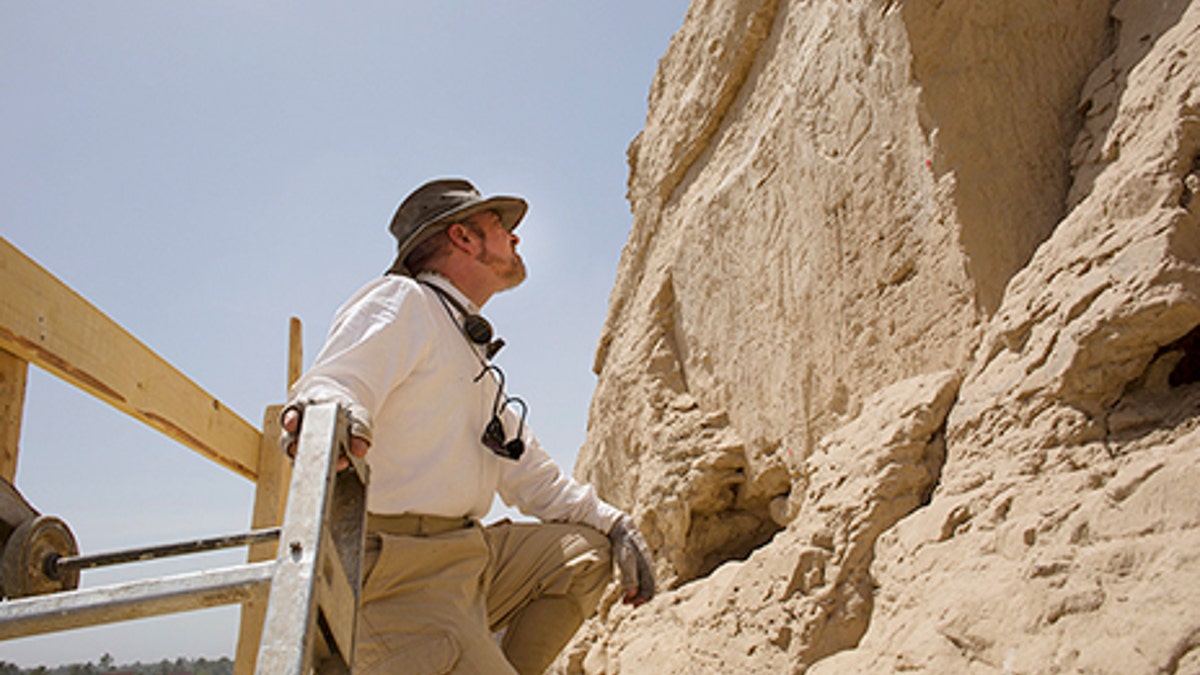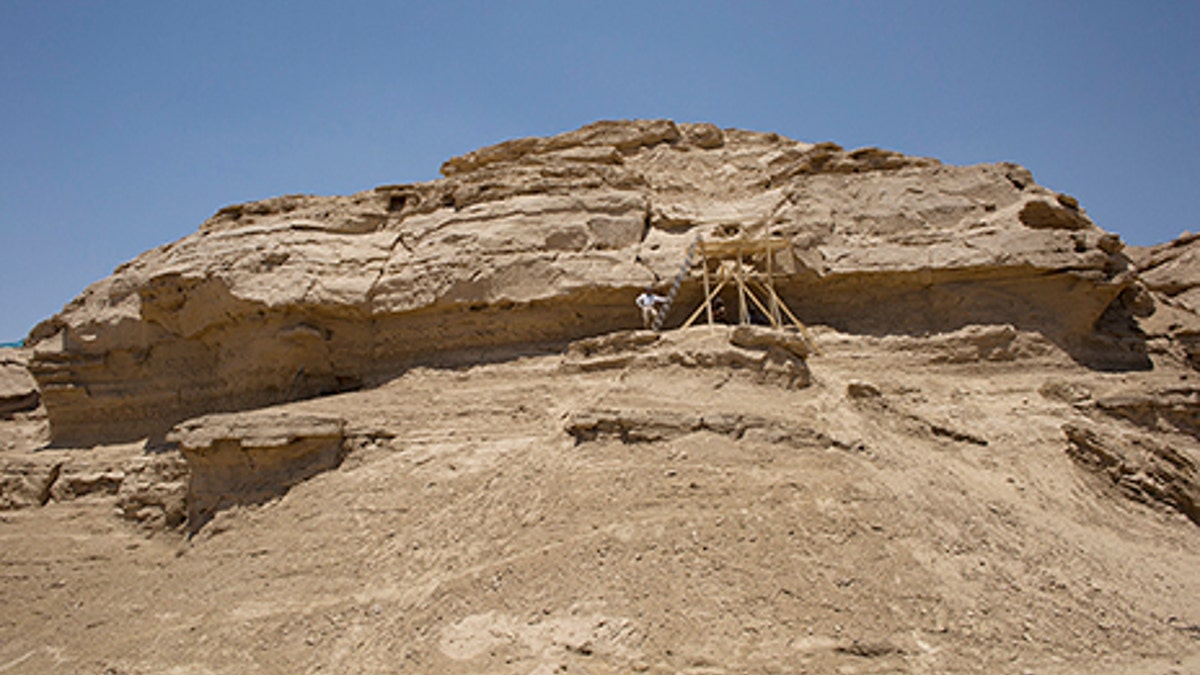Yale archaeologists uncover earliest hieroglyphs in Egypt
Researchers from Yale University have discovered what is believed to be the earliest monumental hieroglyphs, dating back around 5,200 years
Archaeologists from Yale and the Royal Museum of Art and History in Belgium have discovered the earliest-known ‘billboard-sized’ hieroglyphs in the ancient Egyptian city of Elkab.
The hieroglyphs, which are around 21.7 inches in height, date back around 5,200 years. Archaeologists discovered a panel of four signs, written right to left – portraying animal images of a bull’s head on a short pole followed by two back-to-back saddlebill storks with a bald iris bird above and between them. The total tableau of images is about 27.5 inches in height.
“I feel pretty confident that these signs date to about 3,250 B.C.E,” John Coleman Darnell, professor in Yale’s Department of Near Eastern Languages and Civilizations, who co-directs the Elkab Desert Survey project, told Fox News. Coleman noted that the hieroglyphs bear similarities to the earliest known-hieroglyphs at a tomb in Abydos, Egypt.
ANCIENT TOMB OF GOLD WORKER FOUND ALONG NILE RIVER
The immense size of the hieroglyphs at Elkab, however, has stunned archaeologists, who note that other hieroglyphs are often less than an inch in height. “It’s meant to be seen at a considerable distance,” said Darnell, comparing the newly discovered hieroglyphs to a billboard. “This is really interesting in showing that at the early days of hieroglyphs, the Egyptians weren’t just writing on a small scale, they were writing them on a monumental scale as well.”

Yale Egyptologist John Darnell examines the hieroglyphs (Alberto Urcia, Elkab Desert Survey Project).
The discovery also indicates that hieroglyphic writing at that time was geographically widespread, according to Darnell.
Archaeologists say that the arrangement of the symbols at Elkab is common in later representations of the solar cycle and may express the concept of the royal authority over the cosmos.
3,000-YEAR-OLD ROYAL TOMB DISCOVERED IN EGYPT
The rock inscriptions were located by mapping out routes based on the road networks of ancient Egypt, with Darnell noting that most inscriptions were located along major roads that run parallel to the Nile or out into the desert.

The site of the inscriptions (Alberto Urcia, Elkab Desert Survey Project)
The researchers also found rock art depicting a herd of elephants that was carved between 4,000 and 3,500 B.C. One of the elephants has a little elephant inside it, representing a pregnant female elephant.
Technology played an important role in the discoveries at Elkab, with archaeologists harnessing a new recording technique pioneered at Yale.
TOMB DISCOVERY: HEADLESS CROCODILES SHOCK EXPERTS
Darnell and Alberto Urcia, a digital archaeologist and research scientist at Yale, used structure from motion software and Agisoft PhotScan technology to convert 2-dimensional images of the site into rotational 3D ‘models.' These models are used in conjunction with a digital theodolite that measures vertical and horizontal to record the features archaeological sites, according to Darnell. “We get a much more accurate record,” he told Fox News.
Follow James Rogers on Twitter @jamesjrogers





















